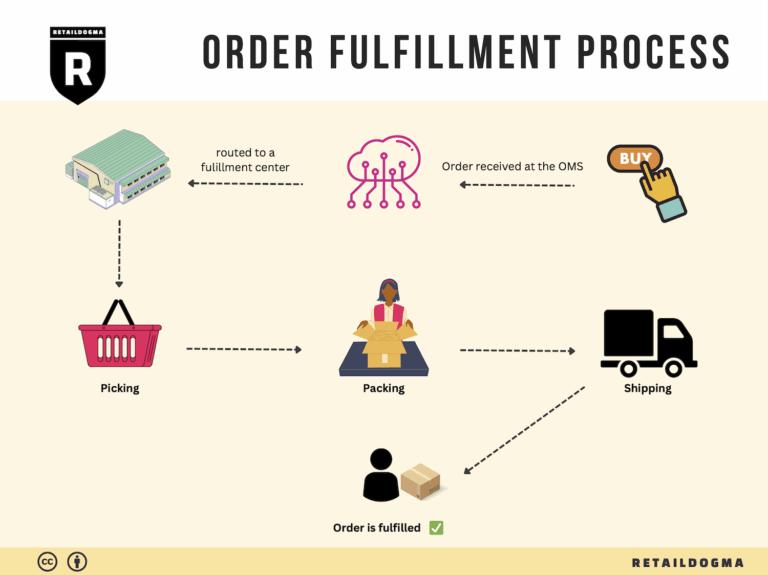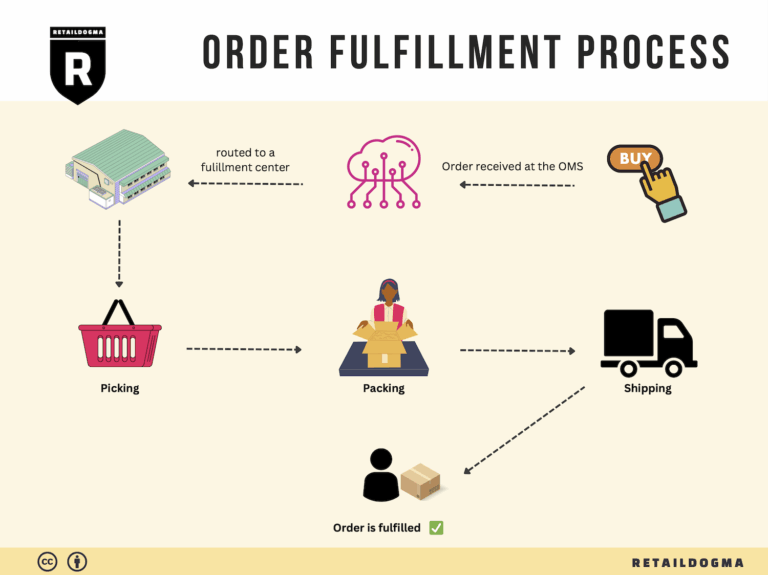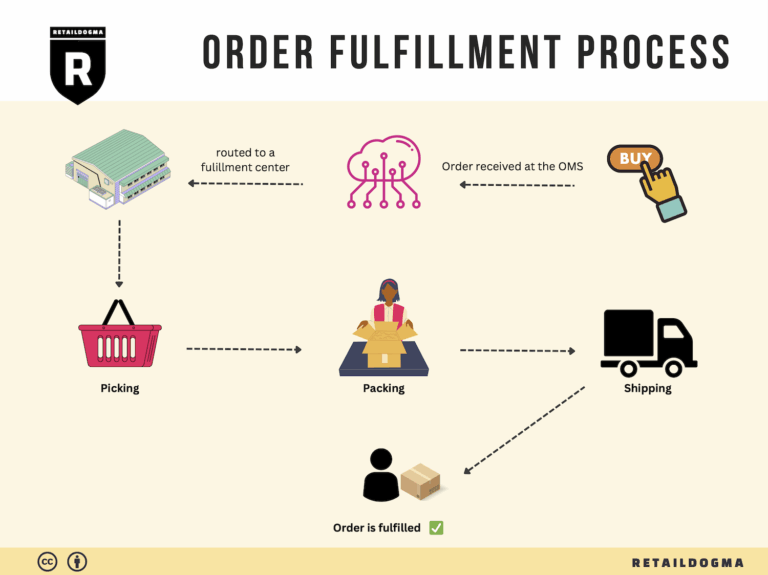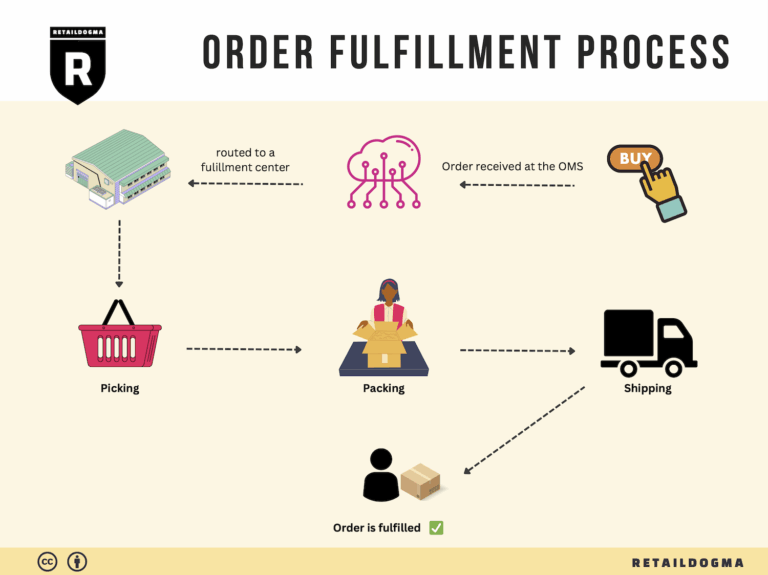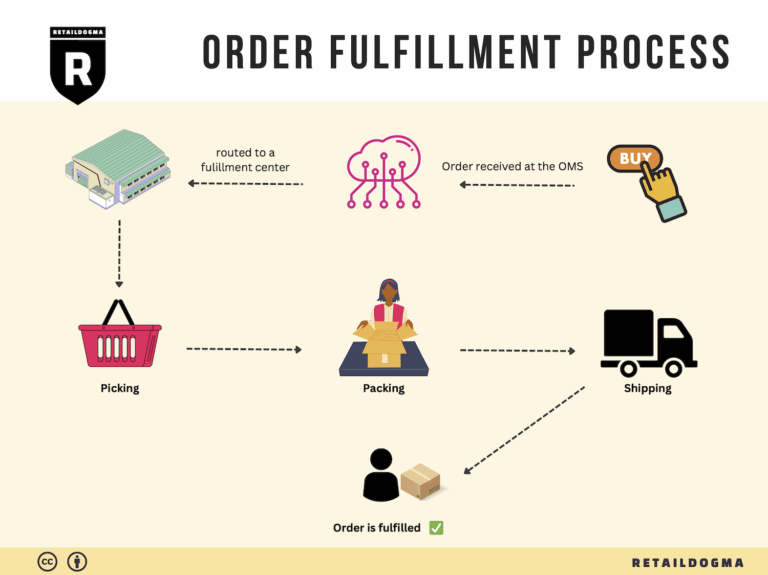What Is A Fulfillment Center? A Complete Guide (2025)
What is E-commerce Fulfillment? An Introduction for Growing Businesses
Understanding the Challenges of E-commerce Fulfillment
As your online business begins to grow, the excitement of increasing sales can quickly be overshadowed by the logistical challenges that come with fulfilling orders. Many entrepreneurs find themselves overwhelmed with the demands of packing and shipping products, managing inventory, and meeting customer expectations—all of which can divert focus from strategic growth initiatives. This is where e-commerce fulfillment comes into play, serving as a vital backbone for your operations.
E-commerce fulfillment is simply defined as the process of getting a product from your store to your customer’s door. It encompasses a range of activities, including inventory management, order processing, packing, shipping, and handling returns. A well-structured fulfillment process not only enhances customer satisfaction but also streamlines your operational efficiency, allowing you to scale effectively.
What This Guide Will Cover
In this comprehensive guide, we will delve into the various models of e-commerce fulfillment, including third-party logistics (3PL) and Fulfillment by Amazon (FBA). Understanding these models will help you determine which option aligns best with your business needs.
We will explore the core services involved in fulfillment, such as:
- Inventory Management: Keeping track of stock levels and ensuring you have what you need when you need it.
- Order Processing: Efficiently receiving and managing customer orders.
- Shipping Solutions: Choosing the right carriers and shipping methods to meet customer expectations.
- Returns Management: Handling customer returns smoothly to retain customer loyalty.
Additionally, we’ll provide practical insights on how to choose the right fulfillment partner, including key factors to consider such as service capabilities, technology integration, and customer service quality.
Finally, we’ll break down the pricing structures associated with different fulfillment models, enabling you to make informed financial decisions.

Empowering Smart Logistics Decisions
The goal of this guide is to empower you—whether you are a business owner, operations manager, or entrepreneur—to make smart, strategic decisions about your logistics. By understanding the nuances of e-commerce fulfillment, you can choose the right approach to not only meet your current demands but also position your business for sustainable growth in the future. With the right fulfillment strategy in place, you can transform the logistics of your business from a pain point into a competitive advantage.
What You’ll Learn In This Guide
- What is E-commerce Fulfillment? An Introduction for Growing Businesses
- The Order Fulfillment Process: From ‘Buy’ Button to Customer’s Door
- Comparing Fulfillment Models: In-House vs. 3PL vs. Dropshipping
- A Deep Dive into Amazon FBA: Pros, Cons, and Who It’s For
- Core Services Offered by Fulfillment Centers
- How to Choose a Fulfillment Partner: A 6-Point Checklist
- Understanding Fulfillment Pricing: A Breakdown of Common Fees
- Frequently Asked Questions (FAQs) about Fulfillment
- Conclusion: Is Outsourcing Fulfillment the Right Move for Your Business?
- Important Disclaimer
The Order Fulfillment Process: From ‘Buy’ Button to Customer’s Door
1. Receiving Inventory
The first step in the order fulfillment process is receiving inventory. This involves the acceptance of goods from suppliers into your warehouse or fulfillment center. When inventory arrives, it is essential to verify that the quantities and quality of the items match what was ordered. This is where Stock Keeping Units (SKUs) come into play. SKUs are unique identifiers for each product, making it easier to track and manage inventory.
Importance: Proper inventory receiving ensures that you have the right products on hand to fulfill customer orders. Discrepancies at this stage can lead to stockouts or excess inventory, which negatively impacts cash flow and customer satisfaction.
2. Warehouse Storage
Once inventory is received and verified, the next step is warehouse storage. This involves organizing and storing products in a manner that maximizes space and facilitates easy access. Efficient warehouse layout and shelving systems are critical in this step. Businesses often use Inventory Management Systems (IMS) to track the location and quantity of each product in real-time.
Importance: Effective storage solutions reduce the time spent locating items and streamline the picking process. When items are stored logically and systematically, it enhances overall efficiency, allowing for quicker order fulfillment.
3. Order Picking
With inventory properly stored, the next phase is order picking. This is the process of retrieving items from the warehouse to fulfill customer orders. Order pickers typically rely on pick lists, which are documents or digital notifications that indicate which items to gather and their respective locations. Depending on the scale of operations, businesses can employ various picking methods, such as single order picking, batch picking, or zone picking.
Importance: The picking process is crucial as it directly influences the speed and accuracy of order fulfillment. Errors during picking can lead to incorrect shipments, resulting in customer dissatisfaction and increased returns. Streamlining this process through technology, such as barcode scanners, can significantly enhance accuracy and efficiency.
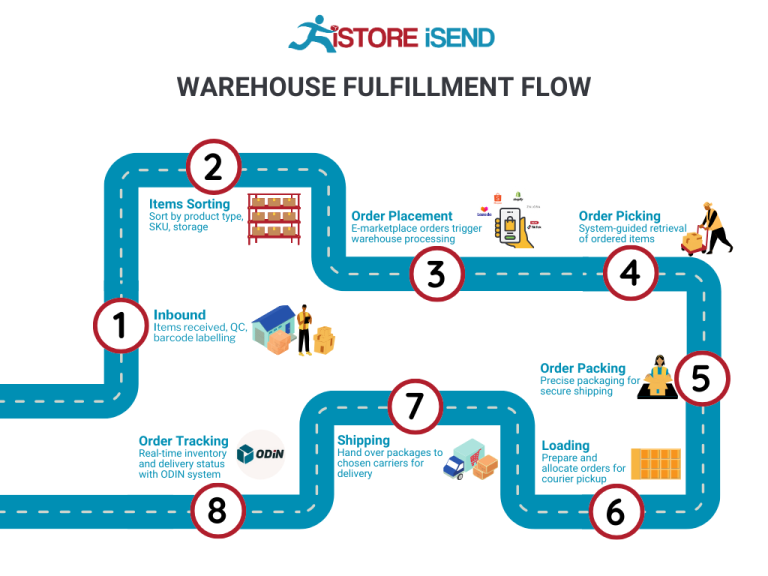
4. Order Packing
Once the items have been picked, the next step is order packing. This involves carefully packaging the products to ensure they arrive safely at the customer’s location. Packing materials such as boxes, bubble wrap, and branded inserts play a vital role in this stage. Businesses should also consider using packing slips that include order details and return instructions to enhance customer experience.
Importance: Proper packing protects products during transit and contributes to a positive unboxing experience for customers. A well-packaged order not only reduces the likelihood of damage but also reinforces your brand identity, fostering customer loyalty.
5. Shipping & Delivery
The final step in the order fulfillment process is shipping and delivery. This involves selecting the appropriate shipping carrier, preparing shipping labels, and dispatching the orders. Key considerations during this step include choosing the right shipping methods (e.g., standard, expedited) and communicating expected delivery times to customers. Effective use of shipping software can help automate label printing and tracking.
Importance: Timely delivery is a critical factor in customer satisfaction. Customers today expect fast and reliable shipping options, and delays can lead to dissatisfaction and lost sales. By optimizing shipping processes and maintaining clear communication regarding order status, businesses can enhance the overall customer experience.
By understanding and optimizing each of these five steps—receiving inventory, warehouse storage, order picking, order packing, and shipping & delivery—e-commerce businesses can create a seamless order fulfillment process that not only meets but exceeds customer expectations. This, in turn, fosters customer loyalty and drives sales growth.
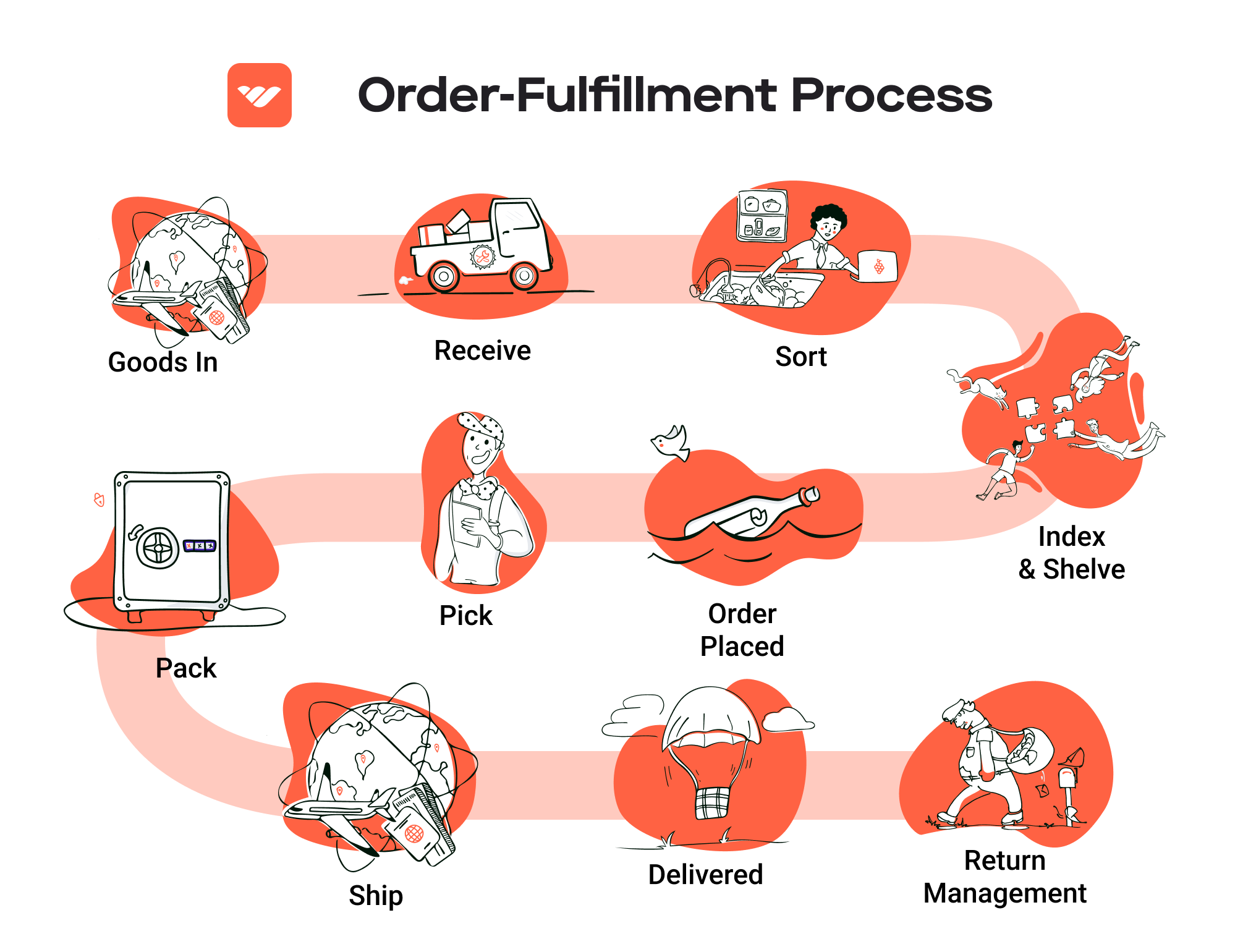
Comparing Fulfillment Models: In-House vs. 3PL vs. Dropshipping
Fulfillment Model Comparison
| Model | Who Handles Inventory | Best For (Business Stage) | Key Advantage | Key Disadvantage |
|---|---|---|---|---|
| In-House Fulfillment | The business itself | Startups or small businesses | Greater control over fulfillment processes | Difficulty scaling as order volume increases |
| Third-Party Logistics (3PL) | A third-party provider | Growing businesses with high order volumes | Cost efficiency and scalability | Less control over the fulfillment process |
| Dropshipping | The supplier/manufacturer | New or niche businesses | Low startup costs and reduced risk | Limited control over shipping and inventory |
In-House Fulfillment
In-house fulfillment involves managing the entire order fulfillment process within your own business premises. This includes handling inventory, processing orders, packaging products, and shipping directly to customers. Typically, this model is most effective for startups or small businesses that have a manageable volume of orders, allowing them to maintain control over their operations and customer experience. The primary advantage of in-house fulfillment is the direct oversight it provides. Businesses can tailor their packaging, branding, and shipping methods to align closely with their brand identity. Furthermore, it allows for better customer service as teams are directly involved in the fulfillment process. However, the key challenge of this model is scalability; as order volumes increase, it may become more difficult to handle operations efficiently without incurring additional costs or sacrificing service quality. Additionally, businesses must ensure they have adequate space and resources to manage inventory, which can limit growth potential.
Third-Party Logistics (3PL)
Third-party logistics, or 3PL, is a fulfillment model where a business outsources its logistics and supply chain management to an external provider. This includes inventory storage, order processing, packing, shipping, and sometimes even returns management. This model is particularly beneficial for growing e-commerce businesses that are experiencing a surge in orders but may not yet have the infrastructure to handle fulfillment in-house. One of the most significant advantages of utilizing a 3PL service is the cost efficiency it offers. By leveraging the provider’s expertise, businesses can reduce operational costs associated with warehousing and logistics, while also benefiting from their advanced technology and optimized shipping processes. Moreover, 3PLs can scale easily with the growth of the business, allowing for flexibility in inventory management and fulfillment strategies. However, a notable downside is the loss of direct control over shipping processes and customer interactions, which can lead to inconsistencies in customer experience if the 3PL does not meet expectations.
Dropshipping
Dropshipping is a fulfillment method where the retailer does not hold any inventory but instead forwards customer orders to a supplier or manufacturer who then ships the products directly to the customer. This model is especially popular among new or niche e-commerce businesses that want to minimize upfront investment in inventory. The key advantage of dropshipping is its low startup cost; businesses can launch with minimal financial risk since they only purchase products after they have been sold. This approach eliminates the need for warehousing and reduces the complexities involved in inventory management. However, dropshipping comes with significant downsides, particularly regarding control. Retailers depend entirely on suppliers for product availability, shipping times, and quality of service. Any delays or issues on the supplier’s end can lead to poor customer experiences, negative reviews, and ultimately, a detrimental impact on brand reputation. Additionally, profit margins can be thinner compared to in-house fulfillment or 3PL, as retailers must pay the supplier’s price, which often includes a markup.
Final Thoughts
As you consider which fulfillment model best suits your e-commerce business, it’s essential to weigh the pros and cons of each option in the context of your unique needs, customer expectations, and growth ambitions. Assess your current order volume, storage capacity, budget, and desired level of control over the fulfillment process. Each fulfillment model offers distinct advantages and challenges, and the right choice will significantly impact your operational efficiency, customer satisfaction, and overall business growth.
A Deep Dive into Amazon FBA: Pros, Cons, and Who It’s For
Understanding Fulfillment by Amazon (FBA)
Fulfillment by Amazon (FBA) is a service offered by Amazon that allows e-commerce businesses to store their products in Amazon’s fulfillment centers. Amazon takes care of storage, packaging, and shipping, making it a convenient option for sellers looking to scale their operations. When a customer places an order, Amazon handles the entire fulfillment process, including customer service and returns, allowing sellers to focus on other aspects of their business.
How FBA Works
-
Product Listing: Sellers list their products on Amazon and choose FBA as their fulfillment method.
-
Inventory Shipment: Sellers ship their products to Amazon’s fulfillment centers. Amazon provides guidelines on how to prepare and package these products.
-
Storage and Management: Once the inventory is received, Amazon stores the products in their warehouses. Sellers can monitor their inventory levels through the Amazon Seller Central dashboard.
-
Order Fulfillment: When a customer makes a purchase, Amazon picks, packs, and ships the product directly to the customer. They also handle all customer inquiries and support related to the order.
-
Returns Management: If a customer wishes to return an item, Amazon manages the return process, including restocking the item if it’s in sellable condition.
Pros of Using FBA
1. Prime Eligibility
One of the most significant advantages of using FBA is that products become eligible for Amazon Prime. This status can significantly increase visibility and sales, as Prime members often prefer products that offer fast and free shipping.
2. Customer Trust
Amazon is a well-established brand with a trusted reputation. By using FBA, sellers can leverage this trust, as customers are more likely to purchase products fulfilled by Amazon due to their reliable shipping and customer service.
3. Multi-Channel Fulfillment
FBA allows sellers to fulfill orders from multiple sales channels, not just Amazon. This means that businesses can sell through their own websites or other marketplaces while still utilizing Amazon’s logistics, making it easier to manage inventory and fulfill orders across different platforms.
4. Scalability
FBA provides businesses with the flexibility to scale their operations without the need for significant investments in warehousing and logistics. As demand increases, sellers can send more inventory to Amazon’s fulfillment centers, allowing for seamless growth.
5. Time Savings
By outsourcing logistics to Amazon, sellers can save time on order processing, shipping, and customer service. This allows them to focus on marketing, product development, and other critical areas of their business.
Cons of Using FBA
1. High Fees
While FBA can save time and effort, it comes with a cost. Amazon charges various fees, including storage fees for keeping products in their warehouses and fulfillment fees for picking, packing, and shipping items. These costs can add up, particularly for low-margin products.
2. Strict Inventory Rules
Amazon has specific requirements for inventory management, including labeling, packaging, and shipping guidelines. Sellers must adhere to these rules, or they may incur additional fees or face penalties. This can be a challenge for smaller businesses that lack the resources to comply with stringent requirements.
3. Commingling Risks
FBA uses a commingling system for inventory, which means that products from different sellers may be stored together. This can lead to potential issues such as receiving a damaged or incorrect item. Sellers may also face challenges if customers return items that were not originally theirs, complicating inventory management.
4. Loss of Control
By outsourcing fulfillment to Amazon, sellers lose a degree of control over the shipping process and customer service. This can lead to inconsistencies in the customer experience, especially if there are issues with delivery or product handling.
5. Limited Customization
FBA limits the ability to customize packaging and branding. While Amazon does provide some options, sellers may not have as much flexibility as they would with in-house fulfillment, which can affect brand identity.
Who is FBA Best For?
FBA is particularly well-suited for small to medium-sized businesses looking to scale quickly without the overhead of managing logistics. Here are some specific profiles that may benefit from FBA:
-
New Sellers: Entrepreneurs just starting in e-commerce can leverage FBA’s infrastructure to enter the market quickly without needing to invest in warehousing or logistics.
-
High-Demand Products: Businesses with products that have high sales volumes can benefit from the scalability and efficiency of FBA, allowing them to focus on growth strategies.
-
Brands Seeking Visibility: Companies looking to gain visibility on Amazon and attract Prime members will find FBA advantageous, as it enhances product discoverability and sales potential.
-
Multi-Channel Sellers: Brands selling on multiple platforms can streamline their fulfillment process by using FBA for all their orders, simplifying inventory management.
-
Companies Lacking Resources: Businesses that do not have the personnel or infrastructure to handle fulfillment effectively can use FBA to offload these responsibilities.
In summary, while FBA offers numerous advantages such as Prime eligibility and customer trust, businesses must weigh these benefits against the costs and challenges associated with Amazon’s fulfillment service. Understanding the unique needs of your e-commerce business will guide you in determining if FBA is the right choice for scaling your operations.
Core Services Offered by Fulfillment Centers
Inventory Management & Warehousing
Inventory management and warehousing are foundational services offered by fulfillment centers that ensure e-commerce businesses can operate efficiently and respond swiftly to customer demands. This service encompasses the systematic tracking of stock levels, orders, sales, and deliveries.
Fulfillment centers utilize advanced inventory management systems (IMS) that provide real-time visibility into stock availability, allowing businesses to optimize their inventory levels, minimize overstock or stockouts, and enhance order accuracy. Effective inventory management also involves categorizing products, forecasting demand, and managing reorder points.
The benefits for e-commerce businesses are substantial. By outsourcing inventory management to a fulfillment center, businesses can reduce their operational overhead, as they no longer need to maintain large warehouses or invest in inventory management technology. Additionally, fulfillment centers often have established relationships with shipping carriers, enabling them to negotiate better shipping rates and ensure timely deliveries. This efficiency not only enhances customer satisfaction but also allows businesses to focus on core activities such as marketing and product development, ultimately leading to higher sales growth.
Pick and Pack Services
Pick and pack services refer to the process of selecting (or “picking”) items from warehouse shelves and preparing (or “packing”) them for shipment. This service is critical in ensuring that orders are accurately filled and shipped in a timely manner.
Fulfillment centers utilize sophisticated technology, such as barcode scanning and automated picking systems, to streamline the pick and pack process. This technology minimizes human error and increases the speed of order fulfillment. Once items are picked, they are carefully packed using appropriate materials to protect them during transit, often incorporating branding elements to enhance the customer experience.
For e-commerce businesses, the advantages of efficient pick and pack services are significant. Quick and accurate order fulfillment leads to improved customer satisfaction and retention. Furthermore, outsourcing this service allows businesses to scale operations without the need to hire additional staff or invest in warehouse space. This flexibility is particularly beneficial during peak seasons or promotional events when order volumes can fluctuate dramatically.
Kitting and Assembly
Kitting and assembly is a value-added service offered by fulfillment centers that involves grouping individual items into a single kit or assembling products before they are shipped to customers. This service is especially useful for businesses that offer bundled products or require assembly for items, such as furniture or electronic devices.
Fulfillment centers employ skilled labor and specialized equipment to manage the kitting and assembly process efficiently. By handling these tasks, fulfillment centers can ensure that products are ready for sale and meet quality standards before they reach the customer. This process can include everything from assembling components to creating promotional bundles that enhance the perceived value of products.
The benefit for e-commerce businesses is twofold: first, kitting and assembly can significantly reduce the time and effort required to prepare products for sale, allowing businesses to focus on marketing and sales strategies. Second, offering kits or assembled products can lead to increased average order values, as customers are often more inclined to purchase bundled items. This service not only enhances the shopping experience but can also boost profitability through higher sales volumes.
Returns Management (Reverse Logistics)
Returns management, also known as reverse logistics, is a critical service provided by fulfillment centers that handles the process of managing product returns. This includes receiving returned items, inspecting them for quality, restocking them, or processing them for disposal or recycling.
A well-organized returns management system is essential for maintaining customer satisfaction, as it directly impacts the overall shopping experience. Fulfillment centers utilize technology to streamline the returns process, providing customers with clear instructions for returns, tracking their return shipments, and automating the restocking process for items that can be resold.
For e-commerce businesses, effective returns management can enhance customer loyalty and trust. A hassle-free return process encourages customers to make purchases with confidence, knowing they can easily return items if they are unsatisfied. Additionally, by outsourcing returns management, businesses can reduce the administrative burden on their teams, allowing them to focus on growth strategies. This service can also provide valuable insights into product performance and customer preferences, informing future product development and marketing strategies.
In summary, leveraging the core services offered by fulfillment centers—inventory management and warehousing, pick and pack services, kitting and assembly, and returns management—can significantly enhance operational efficiency, improve customer satisfaction, and ultimately drive sales growth for e-commerce businesses.
How to Choose a Fulfillment Partner: A 6-Point Checklist
Location & Warehouse Network
The geographical location of your fulfillment partner’s warehouses is crucial for efficient shipping and delivery times. A partner with a well-distributed warehouse network can help reduce shipping costs and improve delivery speed to your customers.
Questions to Ask:
– Where are your warehouses located, and how does that align with my target customer base?
– What is your average shipping time to major regions where my customers are located?
– Do you have the capability to expand your network if my business grows in different regions?
Technology & Integrations
In today’s e-commerce landscape, technology plays a vital role in streamlining operations. A fulfillment partner should provide robust technology solutions, including inventory management systems, real-time tracking, and easy integration with your existing e-commerce platforms.
Questions to Ask:
– What technology do you use for inventory management and order processing?
– Can your system integrate with my e-commerce platform (e.g., Shopify, WooCommerce)?
– Do you offer real-time tracking for both my business and my customers?
– How do you handle updates and system maintenance?
Specializations (e.g., cold storage, oversized items)
Depending on the nature of your products, you may need a fulfillment partner with specialized capabilities. This could include handling perishable goods that require cold storage or oversized items that need specific handling procedures.
Questions to Ask:
– Do you have experience in handling my specific product type?
– What specialized facilities do you offer (e.g., climate control, oversized item storage)?
– How do you ensure compliance with any regulatory requirements associated with my products?
Scalability & Capacity
As your business grows, your fulfillment partner must be able to scale operations accordingly. A partner that can accommodate increased order volumes without compromising service quality will be essential for your long-term success.
Questions to Ask:
– What is your current capacity, and how do you handle peak seasons or unexpected surges in demand?
– Can you provide examples of how you’ve scaled operations for other clients in the past?
– What is your process for onboarding additional resources if needed?
Pricing and Contracts
Understanding the pricing structure of your fulfillment partner is vital to maintaining profitability. Make sure to review all potential costs, including storage fees, pick-and-pack charges, and any additional services that may incur extra costs.
Questions to Ask:
– What is your pricing model, and what costs should I expect beyond the base rate?
– Are there any hidden fees associated with your services?
– What are the terms of the contract, and what is the process for renegotiation or termination?
Customer Support & Reviews
Effective customer support can make or break your partnership with a fulfillment provider. Look for a partner that offers responsive support and has a good reputation in the industry.
Questions to Ask:
– What customer support channels do you offer (e.g., phone, email, chat)?
– How quickly can I expect a response to inquiries or issues?
– Can you provide references or reviews from other businesses you’ve partnered with?
– What is your process for handling fulfillment errors or customer complaints?
Conclusion
Choosing the right fulfillment partner is a critical decision that can significantly impact your e-commerce business. By carefully evaluating potential partners against this checklist, you can ensure that you select a fulfillment provider that aligns with your operational needs, supports your growth, and ultimately enhances your customer experience. Taking the time to ask the right questions will help you uncover potential red flags and find a partner that is not just a vendor but a true extension of your business.
Understanding Fulfillment Pricing: A Breakdown of Common Fees
Initial Setup Fees
Initial setup fees are one-time charges that cover the costs associated with establishing your fulfillment operations with a third-party logistics provider (3PL). These fees can vary significantly depending on the provider and the complexity of your requirements. Common components included in initial setup fees may consist of account setup, system integration, and custom branding options.
Typically, the calculation of initial setup fees is based on the level of customization required and the time it takes to configure the systems to handle your specific inventory and order processing needs. For instance, if you require unique software integration to connect your e-commerce platform with the 3PL’s system, you may incur higher fees due to the additional technical work involved. On average, businesses can expect initial setup fees to range from a few hundred to several thousand dollars.
Receiving Fees
Receiving fees are charged for the process of accepting and processing inventory into the warehouse. This fee typically covers the labor and resources needed to unload shipments, inspect the goods for quality and accuracy, and enter them into the inventory management system.
Receiving fees are often calculated on a per-unit or per-pallet basis, meaning you may pay a set fee for every pallet or box received. For example, if your shipment contains 100 units, you might pay a fixed fee multiplied by the number of pallets the shipment occupies. Depending on the complexity of the receiving process—such as the need for quality checks or special handling—these fees can range from $20 to $50 per pallet.
Storage Fees (per pallet/bin)
Storage fees are incurred for the physical space your inventory occupies within the fulfillment center. This fee is typically calculated on a monthly basis and can be charged per pallet or per bin, depending on how the warehouse manages inventory.
In calculating storage fees, providers consider the size and weight of your products, the duration of storage, and the overall demand for warehouse space. For instance, a standard charge might be around $15 to $30 per pallet per month. If your products are smaller and fit into bins, you might be charged $5 to $10 per bin. It’s essential to understand how your storage needs fluctuate throughout the year, as many providers offer tiered pricing based on volume.
Pick & Pack Fees (per item/order)
Pick and pack fees are charged for the labor involved in selecting (picking) products from the warehouse and preparing them for shipment (packing). This fee can vary based on the complexity of the order, the number of items being shipped, and the type of packaging required.
Typically, pick and pack fees are calculated on a per-item or per-order basis. For example, a provider might charge $1 to $3 for picking each item and an additional fee for packing, which can range from $0.50 to $2 per order. If you have many SKUs or require special packaging materials, this can increase costs. Understanding your average order size and frequency can help you estimate these fees more accurately.
Shipping Fees
Shipping fees are one of the most variable components of fulfillment pricing, as they depend on factors like the shipping method, destination, package dimensions, and weight. Shipping costs can be calculated using flat rates, zone-based pricing, or a combination of both.
Providers typically negotiate rates with carriers (e.g., UPS, FedEx) and pass these costs onto you, often adding a handling fee. Businesses should be aware of how shipping fees can impact overall fulfillment costs, especially if offering free shipping to customers. Strategies like optimizing package dimensions or consolidating shipments can help mitigate shipping expenses.
Tips for Getting an Accurate Quote
-
Provide Detailed Information: When requesting quotes, be as specific as possible about your inventory volume, product types, and expected order sizes. This helps providers give you a more accurate estimate.
-
Ask About Discounts: Many 3PLs offer volume discounts or tiered pricing structures. Inquire about potential savings based on your order patterns.
-
Consider Seasonal Variations: Be clear about any fluctuations in order volume, especially during peak seasons. Some providers may have different pricing structures for high-demand periods.
-
Evaluate Additional Services: If you require value-added services like kitting or custom packaging, ensure these are included in your quote to avoid unexpected fees later.
-
Request a Comprehensive Breakdown: Ask for a detailed breakdown of all fees associated with the fulfillment process. This transparency will help you compare quotes effectively and identify any hidden costs.
By understanding these common fees and how they are calculated, you can make informed decisions about your fulfillment strategy and budget, ensuring your e-commerce business is set up for scalable success.
Frequently Asked Questions (FAQs) about Fulfillment
1. What is marketing fulfillment?
Marketing fulfillment refers to the process of executing and delivering marketing-related materials and products to customers or prospects. This can include sending promotional items, samples, catalogs, or any other marketing collateral. It encompasses the logistics of inventory management, order processing, and distribution to ensure that marketing campaigns reach their intended audience effectively.
2. What’s the difference between a warehouse and a fulfillment center?
A warehouse is primarily used for storing goods, while a fulfillment center is specifically designed for processing and shipping orders. Fulfillment centers typically have advanced technology for inventory management, order processing, and shipping logistics. They focus on speed and efficiency in getting products from storage to customers, often handling returns and customer service as well.
3. What is a 3PL?
A Third-Party Logistics provider (3PL) is a service that manages logistics and fulfillment for businesses. This includes warehousing, order processing, inventory management, and shipping. Using a 3PL allows businesses to scale their operations without investing heavily in their own logistics infrastructure, as the 3PL handles the complexities of the supply chain.
4. How much do fulfillment services cost?
The cost of fulfillment services can vary widely based on several factors, including order volume, storage space requirements, and shipping destinations. On average, businesses might expect to pay between $2 to $10 per order, plus additional fees for storage, packaging, and shipping. It’s essential to request quotes from multiple fulfillment providers to compare pricing and services.
5. How can I choose the right fulfillment strategy for my business?
To choose the right fulfillment strategy, consider your order volume, product type, storage capabilities, and customer expectations. Analyze factors such as your budget, the importance of control over the fulfillment process, and your ability to scale. Options include in-house fulfillment, dropshipping, and utilizing a 3PL, each with its own advantages and challenges.
6. What are the key components of an effective fulfillment process?
An effective fulfillment process includes accurate inventory management, efficient order processing, timely shipping, and a streamlined returns process. Successful fulfillment also relies on clear communication with customers regarding order status and delivery timelines, as well as effective packaging to prevent damage during transit.
7. How can I improve my fulfillment efficiency?
To improve fulfillment efficiency, consider optimizing your inventory management systems, investing in technology for order processing, and establishing relationships with reliable shipping partners. Regularly reviewing your fulfillment processes and seeking customer feedback can also help identify areas for improvement, leading to faster processing times and enhanced customer satisfaction.
8. What role does technology play in fulfillment?
Technology plays a crucial role in modern fulfillment by automating many processes, such as inventory tracking, order management, and shipping logistics. Tools like warehouse management systems (WMS), customer relationship management (CRM) software, and order management systems (OMS) help streamline operations, reduce errors, and improve overall efficiency.
9. How do I handle returns in my fulfillment process?
Handling returns effectively requires a clear returns policy communicated to customers. Implement a straightforward process for customers to initiate returns and ensure that your fulfillment center can quickly process returned items. This includes inspecting products, restocking inventory, and updating your records to reflect returns accurately.
10. Can I scale my fulfillment operations as my business grows?
Yes, scaling your fulfillment operations is possible, especially if you partner with a flexible 3PL provider. As your order volume increases, a 3PL can adjust storage space, processing capabilities, and shipping solutions to meet your needs. If you handle fulfillment in-house, be prepared to invest in additional resources, such as staff and technology, to accommodate growth.
Conclusion: Is Outsourcing Fulfillment the Right Move for Your Business?
Assessing the Benefits of Outsourcing Fulfillment
Outsourcing your fulfillment process can be a transformative decision for your e-commerce business. By partnering with a third-party logistics (3PL) provider, you can unlock several key benefits that significantly enhance your operational efficiency and customer satisfaction.
First and foremost, outsourcing fulfillment saves you valuable time. By delegating the complexities of inventory management, order processing, and shipping logistics, you free up your internal resources to focus on core business activities such as marketing, product development, and customer engagement. This shift allows you to concentrate on scaling your business rather than getting bogged down in day-to-day logistics.
Scalability is another compelling reason to consider a fulfillment service. As your business grows, your order volume can fluctuate dramatically. A reliable 3PL provider can easily adjust to these changes, ensuring that you can meet customer demand without overextending your resources. This flexibility is essential for businesses looking to expand rapidly in a competitive e-commerce landscape.
Moreover, 3PL providers bring specialized expertise to the table. They possess advanced knowledge of supply chain management, shipping logistics, and customer service, which can help streamline your operations and reduce errors. This expertise can lead to improved shipping rates, faster delivery times, and enhanced return processes—ultimately elevating the customer experience.
However, choosing the right fulfillment partner is crucial for your growth. A misaligned partnership can lead to fulfillment errors, poor communication, and dissatisfied customers. It’s essential to conduct thorough research and ensure that your chosen provider aligns with your business values and operational needs.
Take Action
Now is the time to evaluate your current shipping and fulfillment processes. Conduct an audit to determine if a fulfillment partner could enhance your operational efficiency and customer satisfaction. By making informed decisions today, you can position your business for sustainable growth and success in the ever-evolving e-commerce landscape.
Important Disclaimer
⚠️ Important Disclaimer
The information in this guide is for educational purposes. Fulfillment services, pricing, and platform features change frequently. Always conduct your own due diligence and consult with providers directly before making business decisions.

